by Artsy Editorial
The past year, a fresh wave of public art projects popped up across the globe, engaging local communities and neighborhoods with innovative art. Ranging from mesmerizing light shows to massive bronze sculptures, these public works reflect and confront the change and uncertainty of the world around us.
To recognize the enduring power and awe-inspiring nature of public art, the art and design fabrication company UAP has revealed its sixth annual list of the best public art projects of the year. This year’s chosen works were selected by five influential curators: Paul Farber, director and co-founder of Monument Lab; Kirsten Lacy, director of the Auckland gallery Toi o Tāmaki; Matthew Israel, commissions lead of Open Arts at Meta; independent curator Yang Zi; Sarah Collicot, founder of Artscape; and UAP’s curatorial director Natasha Smith and senior curator Ineke Dane.
Here, we share the 2021 list, with insights from the nominators on what makes these works so intriguing. To learn more, you can tune into an interactive webinar panel discussion of these works with UAP’s Natasha Smith and Ineke Dane on Wednesday, December 8th at 7 p.m. EST.
Christo and Jeanne-Claude, L’Arc de Triomphe, Wrapped (1961–2021)
Paris
Christo and Jeanne-Claude, L’Arc de Triomphe, Wrapped, 1961–2021. Photo by Benjamin Loyseau. Courtesy of the Christo and Jeanne-Claude Foundation.
Christo and Jeanne-Claude, L’Arc de Triomphe, Wrapped, 1961–2021. Photo by Benjamin Loyseau. Courtesy of the Christo and Jeanne-Claude Foundation.
“Christo and Jeanne-Claude’s posthumous work, which wrapped the iconic French arch in 25,000 square meters of silvery-blue recyclable polypropylene fabric and 3,000 meters of red rope, was arguably 2021’s most important and visible piece of public art. It attracted worldwide media attention and reportedly six million viewers on the ground in Paris.
“The work was captivating for a number of reasons. To name a few, it was an incredibly ambitious project by one of the best-known creators of public art in the world, and it had a great storyline. It was envisioned by the artists since 1961 and Christo passed away last year (but had approved the work to be executed posthumously).
“What’s often lost in the discussion of Christo and Jeanne-Claude’s works is what they might mean, and this continued with the attention paid to the wrapped Arc. It’s instructive to ponder what this work might be suggesting, especially in our present moment. Over the course of their careers, Christo and Jeanne-Claude cited a few motivations for wrapping objects, such as depriving everyday objects of their function, preserving them for posterity, and proposing them as art. (A case in point is what Christo said in 1985 about wrapping the Pont Neuf in Paris. He explained, ‘I wanted to transform it, to turn it from an architectural object, an object of inspiration for artists, to an art object, period.’) As such, we might ask ourselves what does it mean to propose something as an art object today—36 years after that project. Furthermore, what does it mean to take one of the grandest monuments to those who died in wartime and cover it up?”
—Matthew Israel
Wangechi Mutu, “I Am Speaking, Are You Listening?” (2021)
Legion of Honor, San Francisco
Wangechi Mutu, installation view of “I am Speaking, Are you Listening” at the Legion of Honor, San Francisco, 2021. Photo by Gary Sexton/FAMSF. Courtesy of the artist and Gladstone Gallery.
Wangechi Mutu, installation view of “I am Speaking, Are you Listening” at the Legion of Honor, San Francisco, 2021. Photo by Gary Sexton/FAMSF. Courtesy of the artist and Gladstone Gallery.
Advertisement
“San Francisco’s Legion of Honor was the setting for one of the most dramatic takeovers of museum public space this past year: the installation of four sculptures from Wangechi Mutu’s exhibition ‘I Am Speaking, Are You Listening?’
“The four works were installed in the dramatic colonnaded courtyard that faces the museum’s entrance. Usually, Auguste Rodin’s The Thinker sits alone in the courtyard and looms above those walking by and approaching the museum’s front door. Yet Mutu installed her four works, Shavasana I, Shavasana II, Crocodylus, and Mama Ray, to surround The Thinker, and in so doing, she upstaged Rodin and prompted viewers to ponder—and rethink art history, especially that of modern sculpture. For example, what would Rodin—a (or the) giant of modern sculpture—have made of Mutu, a Kenyan, positioning her works in dialogue with his? Do they have anything in common? And if they do, how does one create a link between the two? And how do the narratives informing Mutu’s work—of Afrofuturism, post-humanism, East African mythology, and feminism—engage with Rodin’s and the narratives of modern sculpture, if at all?
“Besides prompting these historical questions, Mutu’s installation was also spectacularly beautiful, especially Mama Ray. One hopes this piece finds a permanent home in a setting where many more can enjoy it. One also hopes that this installation will prompt other art venues to give Mutu the space to install public sculpture and encourage her to think even more ambitiously about the size and scale of her work.”
—Matthew Israel
Reuben Paterson, Guide Kaiārahi (2021)
Auckland
Reuben Paterson, installation view of Guide Kaiārahi, 2021, at Auckland Art Gallery Toi o Tāmaki, 2021. Courtesy of the artist and Auckland Art Gallery Toi o Tāmaki.
Reuben Paterson, installation view of Guide Kaiārahi, 2021, at Auckland Art Gallery Toi o Tāmaki, 2021. Courtesy of the artist and Auckland Art Gallery Toi o Tāmaki.
“Reuben Paterson’s Guide Kaiārahi is a magnificent 10-meter-tall waka (canoe) made of 595 iridescent crystals, which rises vertically like a gleaming beacon from Auckland Art Gallery Toi o Tāmaki’s forecourt pool. The sculpture welcomes returning visitors after the extended lockdown with a spectacular display of refracted light, like a galaxy of stars over the building. The inspiration for the crystalline sculpture originated in the Māori legend of a phantom waka that appeared at Lake Tarawera 10 days before the volcanic eruption of Mount Tarawera in 1886. Hovering above the Gallery’s forecourt pool, the magnificent waka suggests navigation to worlds beyond our own, and the use of stars to traverse the vast Pacific Ocean to Aotearoa. Moreover, in a time of crisis, it has provided Auckland (Tāmaki Makaurau) with comfort and hope that we hold the capacity to navigate turbulence, major change, and our own personal journeys ahead, with the stewardship of ancestral and universal rhythms.”
—Kirsten Lacy
Ugo Rondinone, vocabulary of solitude (2014–21)
Auckland
Ugo Rondinone, installation view of vocabulary of solitude, 2014–21, at Auckland Art Gallery Toi o Tamaki, 2021. Photo by Jennifer French. Courtesy of the artist and Galerie Eva Presenhuber.
Ugo Rondinone, installation view of vocabulary of solitude, 2014–21, at Auckland Art Gallery Toi o Tamaki, 2021. Photo by Jennifer French. Courtesy of the artist and Galerie Eva Presenhuber.
“The extraordinary 2021 full-building rendition of the major artwork vocabulary of solitude (2014–21) by Swiss artist Ugo Rondinone speaks particularly to the moment we find ourselves in, and transformed Auckland Art Gallery Toi o Tāmaki for its reopening this year. In the soaring North Atrium, a transparent rainbow façade pours coloured light across a floor inhabited by a community of handmade, human-scaled clowns. Each, in a different pose and emotional state of being, watches the passage of time as the sun passes over the Gallery, day in, day out. There is a clown for almost every emotion we have felt during the COVID-19 era: loneliness, boredom, deflation, introspection, exhaustion, and wonder.”
—Kirsten Lacy
Lulwah Al Homoud, The Infinite Blue (2021)
Riyadh
Lulwah Al Homoud, installation view of The Infinite Blue, 2021, at Noor Festival, Riyadh, 2021. Courtesy of the Lulwah Al Homoud Foundation.
Lulwah Al Homoud, installation view of The Infinite Blue, 2021, at Noor Festival, Riyadh, 2021. Courtesy of the Lulwah Al Homoud Foundation.
“Lulwah Al Homoud’s compelling and visually captivating artworks are conceived following in-depth research, placing the philosophy of Islamic art and the mathematical principles of the universe and its creation at its heart.
“Exhibited as part of the annual Noor Festival, a festival of light and public art installations shown in multiple locations across Riyadh, The Infinite Blue provided an immersive experience and attracted huge numbers of visitors. Entering the installation, the audience stepped into a universe where the intensity of the blue screen is punctuated with the mathematical precision of linear abstractions.
“Many of Al Hamoud’s artworks use this specific blue which the artist notes is a tone ‘visible in the sky at sunrise and sunset prayer times,’ telling us that the earth is rotating to the sun again—perhaps also symbolic of hope in these challenging COVID-19 times and a celebration of light over dark. For me it seems to trigger personal inner responses, all of which are positive. This public art installation epitomizes Al Hamoud’s artistic practice, being timeless, fundamental, and ubiquitous.”
—Sarah Collicott
Multiple Artists, Circa 20:20 (2021)
London
Installation view of Circa 20:20, London, 2021. Photo by Roisin Murphy. Courtesy of CIRCA.
Installation view of Circa 20:20, London, 2021. Photo by Roisin Murphy. Courtesy of CIRCA.
“Circa 20:20 is a digital public art and culture program shown at a set time each day in global locations, including London’s Piccadilly Circus light screen, with particular recognition to the October 2021 program entitled ‘WHERE DO WE GO FROM NOW?’
“Curated to showcase digital artistic output by creatives and ‘thinkers,’ the project attracted submissions from early-career and internationally recognized artists such as Ai Weiwei, Patti Smith, and David Hockney. In our socially distanced times this project has brought art, poetry, music, profound thought, and a sense of connectivity to global audiences while also generating debate and intrigue.
“In October, as the COP26 climate change negotiations approached, the screens were lit up each evening with videos showing responses by different people, who had been selected after submitting their responses to the question: ‘Where do we go from now?’ The project brings forward commentary using creative expression, not on fripperies of the day but on our very values; real-world crises; our past, present, and future.”
—Sarah Collicott
Suzanne Brennan Firstenberg, In America (2021)
Washington, D.C.
Suzanne Brennan Firstenberg, installation view of In America, 2021, at the National Mall, Washington, D.C., 2021. Photo by Robin Kent. Courtesy of the artist.
Suzanne Brennan Firstenberg, installation view of In America, 2021, at the National Mall, Washington, D.C., 2021. Photo by Robin Kent. Courtesy of the artist.
“This fall, in the throes of the COVID-19 Delta variant outbreak in the United States, within a country struggling with the weight of an unfathomable collective grief and battling through pernicious anti–public health propaganda, artist Suzanne Brennan Firstenberg installed her monumental In America project on the National Mall in Washington, D.C. The premise: Firstenberg and a team of associates planted small, palm-sized white flags en masse, each representing a life lost to the COVID-19 pandemic. The flags were placed on thin wires, installed by piercing the ground and in turn blanketed the north lawn around the Washington Monument.
“A year before, Firstenberg first carried out an earlier version of this project in the area surrounding RFK Stadium, an iteration that conjured the nearby Arlington National Cemetery. Just as Firstenberg had done in her previous iteration at RFK, passersby on the National Mall were invited to dedicate single flags to loved ones and friends killed by the pandemic by writing messages to them. In carrying out this project on the National Mall, Firstenberg elevated the stage of her work, focalized the scale and pain of the pandemic in the heart of the symbolic core of the nation, and created a place and archive of images necessary for mourning and connection in the midst of mass compounding loss.
“Sweeping views of the installation could be seen covering much of the grassy footprint around the Washington Monument, rising to over 700,000 flags by the end of the temporary installation. Sited at the edge of Constitution Avenue, between 15th and 17th Streets Northwest, the installation of flags was framed by nearby monuments and museums, the White House, and a large somber billboard on which the national death toll was updated each day. This feature was as photogenic as it was necessary to ground this artwork as part memorial and part indictment. Adding to this, for those seeing the installation from up close, you could find a small, pointed section of flags near the main sign highlighting the cumulative death toll of New Zealand (27), a country that took an early stringent approach to confront the pandemic, next to a collection of flags representing what the cumulative death toll ‘could have been’ if the United States had ‘adopted New Zealand’s approach’ (1,809). These details pushed this temporary installation with enduring perspectives and sightlines, in grand and granular ways.
“One afternoon in September, I took my students from the nearby Corcoran School of the Arts and Design at the George Washington University for a tour of the Mall that closed with a visit to In America. We plotted our approach from the steps of the Lincoln Memorial, where we happened to see White House helicopters encircle the area above the installation. We later learned that it was President Biden viewing the memorial from above. Minutes later, when we approached the installation from ground level, we stopped to listen to the sound of the breeze working its way through the sea of flags, flapping and clamoring, harkening and haunting. We eventually split up, as my students moved through the massive installation. We all lost one another for minutes at a time, snagged by the handwritten note on a particular flag, ruminated on another viewer’s reaction, or swept up in the entirety of the project and this pandemic. When we found one another again, just before sunset by the billboard sign, we gathered to pause and take in what we went through together. There, we could feel the rush and release of grief and glimpsed a prospect of accountability.”
—Paul Farber
Michelle Browder, The Mothers of Gynecology (2021)
Montgomery, Alabama
Michelle Browder, installation view of The Mothers of Gynecology, 2021, at the More Up Campus, Montgomery, Alabama, 2021. Photo by Jill Friedman. Courtesy of the artist.
Michelle Browder, installation view of The Mothers of Gynecology, 2021, at the More Up Campus, Montgomery, Alabama, 2021. Photo by Jill Friedman. Courtesy of the artist.
“In Montgomery, Alabama, one mile from the State Capitol and a block from Equal Justice Initiative’s National Memorial for Peace and Justice, Michelle Browder’s The Mothers of Gynecology monument stands as a new beacon of truthtelling and historical acknowledgement. Dedicated in September 2021, the 15-foot-tall metal ensemble sculpture honors three Black women—Anarcha, Betsey, and Lucy—who were enslaved and brutally experimented upon without consent by Dr. J. Marion Sims, dubbed the ‘father of gynecology’ despite his horrific and inhumane practices. In New York City (where Sims is buried), following a grassroots campaign from groups including Black Youth Project 100, a statue to Sims was removed by the city in 2018. However, in Montgomery, the city where Sims conducted his heinous experiments, a statue remains on the grounds of the state capitol, and is prohibited to be altered under state law designed to protect Lost Cause Confederate monuments.
“Artist Browder first learned about Anarcha, Betsey, and Lucy as a student at the Art Institute of Atlanta over two decades ago. As she recalled to the Washington Post, she has long pondered: ‘What am I going to do to change the narrative?’ Browder, who also founded and operates More Than Tours through a fire-engine-red trolley with ‘1619’ emblazoned on one side of the front hood, has shifted the practice of storytelling in a city that that claims status as both the ‘Cradle of the Confederacy’ and ‘Birthplace of the Civil Rights Movement.’ Over the last several years, in consultation with metal artists including several who produce projects for Burning Man, Browder took up welding and installed a fabrication lab in the back of a massive family-owned warehouse that also became her studio. There, she fashioned The Mothers of Gynecology monument with collected common metal objects including discarded medical tools and surgical implements. The resulting sculptures are intricate and layered, as they mark presence and absence in place.
“Since its dedication in September, Browder’s The Mothers of Gynecology has emerged as another meaningful site of reckoning and reimagining monuments in Montgomery and beyond. The sculpture sits on a circular base lined by bricks on the corner of Mildred and Sayre Streets, where Browder, family members, and several colleagues have also inaugurated the More Up Campus—a featured project of Monument Lab’s Re:Generation 2022 nationwide public art and history exhibition—as a holistic space where art, history, and health come together and conversations take place around the legacy of slavery, maternal health, and reproductive justice.”
—Paul Farber
Zhao Bandi, Panda Garden | Life on Clouds (2021)
Shanghai
Zhao Bandi, installation view of Panda Garden | Life on Clouds, 2021, at Fosun Foundation, Shanghai, 2021. Courtesy of the artist and Fosun Foundation.
Zhao Bandi, installation view of Panda Garden | Life on Clouds, 2021, at Fosun Foundation, Shanghai, 2021. Courtesy of the artist and Fosun Foundation.
“In 2021, the Painting Summit Forum, organized by Zhao Bandi in 2017, regained attention on the internet. In this forum, he invited eight other prominent Chinese painters to conduct a discussion that seemed to be tedious and aimless. Four years later, people seem to finally understand the intentions of this cunning artist: When these painters gathered together, the topic that emerged from their conversation was about the continuation and betrayal of Chinese socialist realist painting in the contemporary context.
“Also in 2021, Zhao Bandi unveiled the public sculpture Panda Garden | Life on Clouds at Fosun Foundation. He used the urban landscape of Shanghai’s busiest locations as a backdrop for this group of works. The work seems to return to his old ways of using panda symbols. But it is a path that sheds light on the hidden clue in the Painting Summit Forum: how to view a drastically changing reality with an accumulated experience of painting, and to point out where this drastic change is persistent.”
—Yang Zi
Isa Genzken, Rose II (2021)
Hong Kong
Isa Genzken, installation view of Rose II, 2021, in Hong Kong, 2021. Courtesy of the artist and K11 MUSEA.
Isa Genzken, installation view of Rose II, 2021, in Hong Kong, 2021. Courtesy of the artist and K11 MUSEA.
“Isa Genzken’s intricately woven work is suffused with what Michael Fried calls ‘theatricality.’ In Rose II, this theatricality is vast enough to encompass the historical significance of a particular time and place; or rather, it is the time and place that play a decisive role beyond the elements of the work itself in making her public artworks so memorable. The giant rose, which once stood in New York and Paris, blooms in Hong Kong, responding in equal measure to the skyscraper-lined cityscape and the city’s need for kitschy spectacle. This time, more locally, it seems to be a romantic gesture that patches up the torn social sentiments and rebuilds a trustful relationship. By virtue of its timing and location, the dual functions of art, both soothing and provocative at once, are embodied in this sculpture despite the simplicity of its form.”
—Yang Zi
Sanford Biggers, Oracle (2021)
New York City
Sanford Biggers, installation view of Oracle, 2021, at the Rockefeller Center, New York City, 2021. Photo by Daniel Greer. Courtesy of Art Production Fund.
Sanford Biggers, installation view of Oracle, 2021, at the Rockefeller Center, New York City, 2021. Photo by Daniel Greer. Courtesy of Art Production Fund.
“Sanford Biggers took over Rockefeller Center in spring 2021 with his monumental Oracle sculpture (7.64 U.S. tons of cast bronze). This awe-inspiring work marked a key moment in the COVID-19 trajectory of New York City as it began to reopen, with warmer weather signaling a key turning point after a grueling winter for all New Yorkers. Over a decade in the vision and planning, with Art Production Fund, Oracle, standing at 25 feet tall, is the latest in the Biggers’s “Chimera” sculpture series, which merges African masks and European figures. The seated body is inspired by the ancient Temple of Zeus, while the head is based on masks and other sculptures from various African cultures, including Luba art and the Maasai culture.
“Biggers also wanted the work to complete the story at the Center with an African voice, speaking in a conceptual conversation with other monuments in the surrounding urban space which predominantly speak to Western mythology and symbols. Biggers’s flags, which compliment the solidarity of Oracle, depict water patterns and reference the African slave trade in the U.S. This work is one that evokes the curiosity of the viewer and packs a serious punch on aesthetic gravitas. The Oracle, through an interactive QR code, also delighted viewers by sometimes answering questions, with what Biggers described as ‘poetic vagaries.’”
—UAP Curatorial Team represented by Natasha Smith and Ineke Dane
Emeka Ogboh, This Too Shall Pass (2021)
Frankfurt, Germany
Emeka Ogboh, installation view of This Too Shall Pass, 2021, in Frankfurt, Germany, 2021. Photo by Barbare. Courtesy of Emeka Ogboh.
Emeka Ogboh, installation view of This Too Shall Pass, 2021, in Frankfurt, Germany, 2021. Photo by Barbare. Courtesy of Emeka Ogboh.
“Emeka Ogboh’s This Too Shall Pass was a poignant, temporary intervention within and throughout Frankfurt; a complex and evocative layering of sound, movement, and site-specific installation occupying aural and physical space throughout the city from July to October. Through the a cappella soundscape component of the work (which travelled on water via the River Main atop a raft, complimented by speakers clothed in woven fabrics with reference to Igbo crafts on land), the artist asks: What does singing together mean in our society, especially in a pandemic and crisis-ridden world where music and art per se have long been silenced?
“All-encompassing and evoked via his entangled, sophisticated conceptual armature, Ogboh’s work ‘confronts current thinking about the migration of people and their cultural assets, about equality, participation and identity with the principle of cultural appropriation as a way of overcoming borders.’ He says above the work hovers the political and human question of how we want to live together in the future; a question that requires constant reassessment and a nimble, generous embrace.”
—UAP Curatorial Team represented by Natasha Smith and Ineke Dane
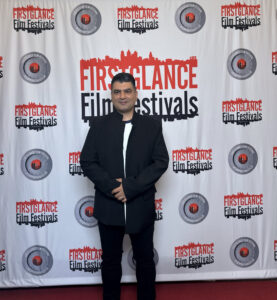



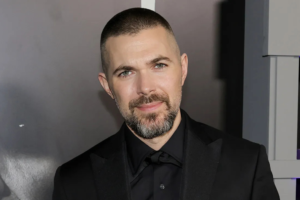


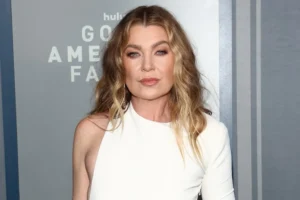
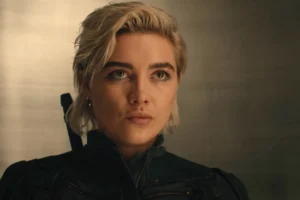


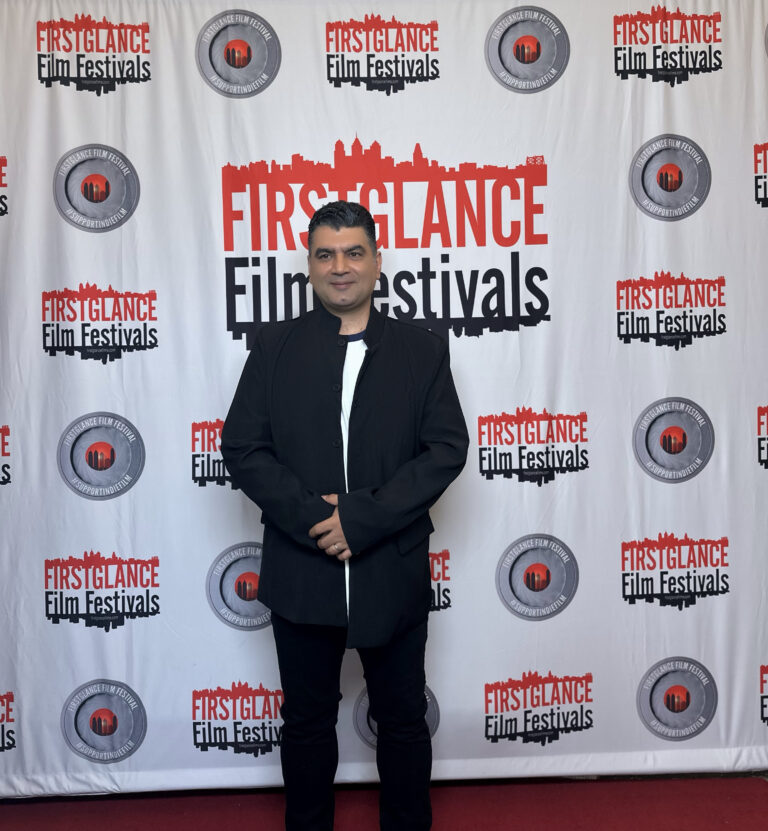
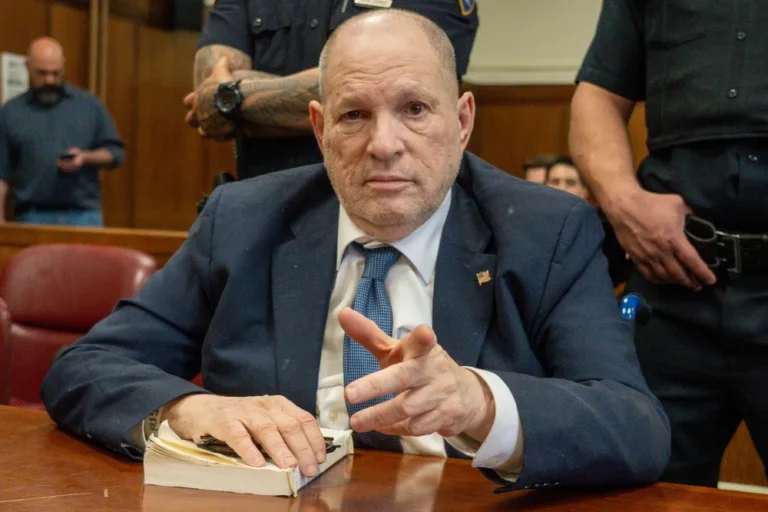

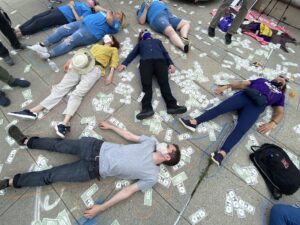
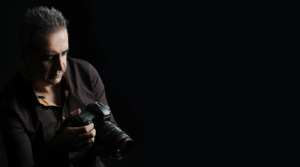
+ There are no comments
Add yours